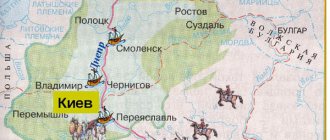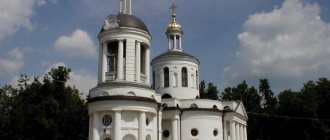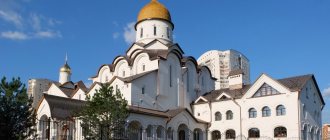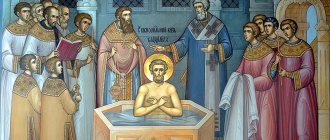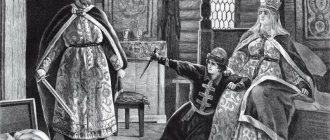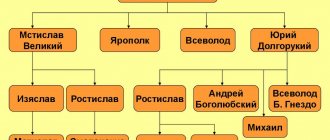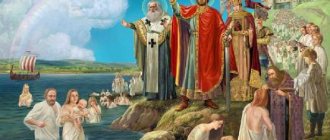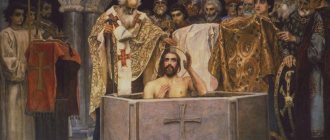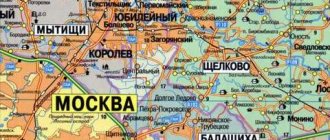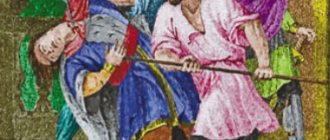The predecessor of the Prince Vladimir Cathedral was the mud-brick Assumption Church, which had three chapels. Construction of the church began in 1713.
The first chapels to be completed and consecrated were Nikolsky and Predtechensky. In 1717, services were already held there. Two years later, the main temple opened its doors. It was dedicated to the Dormition of the Blessed Virgin Mary.
The Tsar was personally present at the ceremony and granted the temple the status of a cathedral, because in size and number of thrones it surpassed both the Peter and Paul Cathedral and St. Isaac's Cathedral.
The temple received its dedication not by chance. This was a kind of reference to the Assumption Cathedral of the Moscow Kremlin: St. Petersburg thus designated its “succession” in relation to the ancient capital.
There, on Mokrushakh, next to the cathedral, a locum tenens courtyard was built, after which St. Petersburg became the center of not only state, but also church administration.
History of Vladimir Cathedral
This Cathedral is so old that, unfortunately, the exact date of its opening has been lost. What is known is that construction work on its construction began in the 60s of the 18th century. The temple is a five-domed building that contains all Russian architectural traditions.
In 1745, a wooden church stood on the site of the modern Cathedral. Construction work on the construction of the stone building began only 15 years later. The author of the project was a famous Swiss architect. At that time he was considered the main architect in St. Petersburg.
In addition to the Cathedral of the Vladimir Icon of the Mother of God in St. Petersburg, other famous churches such as Panteleimon and Spaso-Sennovskaya were built according to his designs.
Dear brothers and sisters! We invite you to visit the unique resource https://www.slovo-pomoshi.ru/. With its help, you can convey your aspirations to St. Petersburg churches, chapels, monasteries, and also contact the righteous at the place of their burial. We will write a note ourselves, take it to the temple and send you a photo report by email. Turning to God with the help of prayers has helped many people overcome grief, regain health and the joy of worldly life.
Useful articles:
6 ANNUAL MIRACLES OF ORTHODOXY. 1. The descent of the Holy Fire occurs annually on Holy Saturday (the eve of the celebration of the Holy Resurrection of Christ) in the Church of the Holy Sepulcher in Jerusalem. Many people felt the Holy Fire. For the first 5 - 10 minutes it does not burn at all.2. On the eve of the day... Read more
God - we can’t scold! God - we can’t scold! Here are examples from life about people who dared to raise their dirty hands and filthy tongues against God and the Church. When a church was broken in the village of Selyavny, Voronezh region, the chairman of the village council and two of his assistants smashed a unique huge... Read more
10 Most Popular Christian Movies. Have a nice watching. Christian films are a great alternative to modern films. They show a person how to live in harmony with himself and God, what the lifestyle of a respectable Christian should be. In addition, you will be able to understand how the world and all its inhabitants were created. For t… Read more
WHAT TO DO WHEN IT'S HURTING? What to do when you are offended and when you cannot cope with the offense? Once the Optina elder Nikon received a letter with insults and abuse. The elder thought: “Who could have written this? Who is the letter from? “But he immediately pulled himself together: “Nikon, this is none of your business, there is no need to interrogate... Read more
The main icon of the sacred building is considered to be the miraculous “Vladimir” icon of the Mother of God. It was written by the evangelist Luke. This holy face was in Jerusalem and Constantinople for some time, after which it was transported to Moscow, and after it was brought to this temple in honor of her, it received its name. Many parishioners bowed before her and soon rumors began to spread throughout the country about her miraculous action. district, and then beyond.
As a token of gratitude for the miracles she performed, believers brought pearls and jewelry made of precious metals. Therefore, today the holy face is completely studded with pearls and other decorations. Unfortunately, today it is not known where the original holy image is located. After the end of the revolution, believers often tried to return it, but over time it was lost. Today in the Cathedral there is an exact copy of the holy image. Many believers also come to him and read prayer requests for help in various life difficulties.
Must read: Church of the Assumption of the Blessed Virgin Mary in Veshnyaki
It should be noted that the history of this sacred place is in some way connected with the Pushkin family. His parents lived not far from the church, and as soon as he visited them, he always came here to bow before the holy face.
About the abbot
Mark Kravchenko became the rector of the temple. After graduating from secondary school, Kravchenko became a student at the Moscow Theological Seminary, and later at the Moscow Theological Academy. Upon completion of his studies, he became a deacon. Since 2011, he has been the rector of the church in the Kuzminki microdistrict in Moscow.
In honor of the celebration of Easter, M. Kravchenko received an award from His Holiness Patriarch Kirill in the form of the right to wear a pectoral cross.
History of construction
The founder of the Cathedral is Catherine the Great herself, who attracted the famous Antonio Rinaldi to the architectural work, through whose efforts and imagination this austere-looking temple appeared in one of the ancient city blocks.
Prince Vladimir Cathedral in St. Petersburg
The history of the emergence of the Prince Vladimir Cathedral in St. Petersburg is of interest. The fact is that the temple first appeared in this place back in 1708 and it was dedicated to Nicholas the Wonderworker, one of the most revered saints.
After quite a short time, on the site of this small church, a new one arose, having 2 limits - the Assumption Church; in 1740, a temple built of stone already stood in this place. And only 25 years later, by decree of Empress Catherine the Great, the Italian architect began to develop an architectural plan for the cathedral, which, according to his idea, was to be five-domed.
It is also known from history that Antonio Rinaldi, having started construction, was unable to complete it and the completion of the temple was entrusted to the Russian architect Ivan Starov. Perhaps for this reason, the cathedral absorbed 2 different architectural styles, but did not lose its external beauty. In the 90s of the 18th century, the cathedral was consecrated in honor of Saint Prince Vladimir, who brought the Christian faith to Russian lands.
The year 1823 in the history of the temple is significant in that during this period some elements of the Empire style were added to the architecture of the cathedral, and in 1845 the temple was recognized as the main one among the cathedrals of St. Vladimir.
Prince Vladimir Cathedral at the beginning of the twentieth century
By a happy coincidence, even during the most difficult times of Soviet power, the Prince Vladimir Cathedral was not damaged and has been preserved to this day in almost its original form.
Interesting! The history of the cathedral is closely connected with names known throughout the world. Among the parishioners of the temple, historians note Alexander Pushkin and his entire family, Nikolai Rimsky-Korsakov, Alexander Blok.
Current state
Today, in addition to traditional services, the temple lives an active life, also performing an educational function (it has a library of Christian books, publishes the magazine “Living Water”, organizes lectures for those who believe or are simply interested in the history of Orthodoxy), as well as a social one, engaging in charity and providing feasible targeted assistance to those in need.
Description of the building
The founding date of the Vladimir Church was 2011. The Orthodox Church of Prince Vladimir in Kuzminki is a functioning church. This is a small rectangular building. The wooden chapel church has an entrance tambourine in the west and a rectangular apse in the east. The completion of the structure is an octagonal tent, on which the dome is located. There are no belfries on this building.
After the completion of this sacred construction, the consecration of the temple took place. This event took place in the same year when construction was successfully completed. In 2013, a wide wooden refectory was added, the entrance of which was decorated with a bell tower. The following year the altar was consecrated, and the church was assigned to the men's monastery building. The location of this shrine is Kuzminki in Moscow.
Shrines
The main value of the temple is the iconostasis of the upper altar. It is one of the ten unique creations of church art. The iconostasis project was developed by Rastrelli himself. It was brought to life by the best masters of the Elizabethan era.
But the most important thing that the Vladimir Church (St. Petersburg) is really proud of is its icons. In first place is the image of the Mother of God itself, which came to Russia at the beginning of the twelfth century from Byzantium. Its author is the evangelist Luke, who depicted Mary with her husband and little Christ eating a meal.
If you look at the icon from the reverse side, you can see the image of the throne and the instrument of passion.
Another shrine of the cathedral is “Savior Not Made by Hands”. This icon depicting the Savior is famous for the fact that, according to legend, it gives strength to overcome difficulties, helps overcome illnesses and gives tips in solving problems. It is this miraculous image that the Vladimir Church (St. Petersburg) is famous for.
Construction of the modern Prince Vladimir Cathedral
In 1740, the new queen, Anna Ioannovna, ordered the construction of a stone church next to the wooden one for three thousand worshipers. The project was entrusted to the architect Pietro Antonio Trezzini. He intended to build a one-domed church, similar to the cathedral of the Peter and Paul Fortress. Construction began, the building was erected under the arches and... mothballed: a palace coup, Elizaveta Petrovna on the throne.
Only seven years later, the new empress finally ordered the construction of the cathedral, but the final plan was approved only in the mid-60s of the 18th century, already under Catherine II. Then Antonio Rinaldi's project won.
The new cathedral was roughly rebuilt in six years. By 1772, it complemented the city panorama that opened from the windows of the Winter Palace, and its bell tower became a landmark for ships sailing to the Malaya Neva. All that remained was to complete the interior decoration of the temple, but a fire occurred and construction was abandoned again for ten years - foreign policy tasks came first - the struggle for Russia's access to the Black Sea.
In 1783, the Tauride province was included in the Russian Empire. In Tauride Chersonese, Prince Vladimir was baptized and Mother Catherine remembered the long-term construction of the Assumption Church (after all, more than forty years had passed since its foundation). The Empress wanted to see the completed cathedral, and the dedication should be to Grand Duke Vladimir.
The church was completed by the architect Ivan Yegorovich Starov. Assistant Starov M.E. Melentyev took upon himself all the management of the finishing work inside the temple. Construction began again in 1783. Three years later, the Nikolsky chapel was consecrated, and in 1789 the main altar was consecrated in the name of the holy Equal-to-the-Apostles Prince Vladimir.
This is how the Prince Vladimir Cathedral that we see now appeared in St. Petersburg.
Under the protection of Saint Prince Vladimir
The small wooden church of St. Equal-to-the-Apostles Prince Vladimir on Marshal Chuikov Street is crowded on Sundays and holidays. It’s not surprising: in the 100,000-person metropolitan area of Kuzminki, this is now the only functioning Orthodox church. There are also weekdays when there is nowhere to fall: the house of prayer is filled with young people in uniform. They diligently stand through the entire Divine Liturgy and proceed to the Holy Chalice in strict order. And there is nothing strange in this either: the Church of the Holy Equal-to-the-Apostles Prince Vladimir is also the home church of the Presidential Cadet School of the Russian Guard named after M.A. Sholokhov. The so-called cadet Liturgies are celebrated here regularly, according to a schedule previously agreed upon with the administration of the educational institution.
In an interview with a correspondent of the “Journal of the Moscow Patriarchate”, the school’s confessor, the rector of the Church of St. Equal-to-the-Apostles Prince Vladimir, priest Mark Kravchenko, tells how Cossacks are recruited in this temple (a ceremony of initiation into a Cossack, which involves taking an oath to the Fatherland and the Orthodox faith in the temple) and why cadets are not interested in communicating with former classmates .
House temple, free entry
— Your Reverence, the temple stands on a bend in Marshal Chuikov Street. Despite the official status of the brownie, it seems to be facing the residential areas of Kuzminki, and it is separated from the territory of the cadet school by a fence and a checkpoint. Why did this happen?
— The Prince Vladimir Church in Kuzminki is seven years old. It was consecrated in a small rite in November 2011, and we are still awaiting the great consecration. The idea of its construction belonged to Metropolitan Savva of Tver and Kashin, when he was a bishop and then ruled the South-Eastern Vicariate of Moscow. It began to come to life even before my appointment as rector. The school was then the Moscow Cossack Cadet Corps named after M. A. Sholokhov. Historically, the Cossacks of the Russian state have always been brought up in a patriotic spirit based on the Orthodox faith. It is no coincidence that one of the most common proverbs about the Cossacks sounds like this: “A Cossack without faith is not a Cossack.” Teachers used to take Moscow Cossack students from the cadet corps to nearby churches. But they can be called nearby with a certain degree of convention: both the Nikolo-Perervinsky monastery and the Blachernae Church in the Kuzminki-Lublino park are located within several bus stops. And such intra-city pilgrimages were in any case agreed upon and permitted under the personal responsibility of the adult accompanying person.
The administration of the Cossack cadet corps proposed to build a house church on its territory. But the Ministry of Education, under the pretext of the constitutional norm on the separation of Church and state, did not cooperate. The Moscow authorities picked up a small plot of land in the neighborhood - in the immediate vicinity of the 30th house on Marshal Chuikov Street (an abandoned and half-abandoned hostel). In terms of layout, it is far from ideal (for example, there is absolutely no place to park a car), and its area is small. But Kuzminki is a Moscow district with dense buildings; there is practically no free land here.
Traditionally, the main Cossack holiday is considered to be the Day of the Intercession of the Mother of God. Therefore, the designers and builders who erected the church here intended it to be Pokrovskaya. But the Hierarchy gave a different blessing. And two years ago, when the Cossack cadet corps was on the verge of closure (the Moscow authorities considered it inappropriate to continue funding such costly educational institutions as cadet corps from the city budget), the Russian Guard came to the rescue. In fact, this structure, by taking the corps under its wing, saved it from liquidation. We see in this a direct consequence of the intercession of the Holy Equal-to-the-Apostles Prince Vladimir, the heavenly patron of the Internal Troops of the Russian Federation, of which the Russian Guard is the legal successor.
We should not forget that the Cossacks in Rus' not only stood at the origins of regular professional protection of the state border, they also to a large extent acted as the prototype of those power units that eventually formed into the Internal Troops. And common roots make it clear: many current employees of the Russian Guard have Cossack ancestry. We must pay tribute to the director of the Russian Guard, Viktor Zolotov: he increased funding for the cadet corps transformed into a school, but did not destroy the traditions associated with the Cossacks. The school inherited the name from the building in honor of Mikhail Sholokhov. The Cossack Museum and a good library with relevant literature are carefully preserved here. At the same time, the Russian Guard received the opportunity to place children from the families of their dead or those in need of constant assistance. By the way, quite recently the board of trustees of the school decided that our students will participate in the annual military field training in the 21st Sofrinsky separate operational brigade of the Internal Troops of the National Guard together with cadets of the Ruza Cossack Corps near Moscow. I think that such joint service will further strengthen the mutual assistance and solidarity of the Cossacks and the Russian Guard, at least in the younger generation!
— As a military priest, you care for the Cossacks of the Central Federal District. But the center of the European part of Russia is not a Cossack region. What exactly does this obedience of yours consist of?
— First, I’ll tell you how I approached its implementation. Here, at the Cossack Cadet Corps, Cossack guests often came - atamans of both registered units and Cossack public organizations. And the current Metropolitan, and then Bishop of Stavropol and Nevinnomyssk Kirill, who heads the Synodal Committee for Interaction with the Cossacks, invited me to engage in their spiritual care. I was touched by the personal appeal to me from His Holiness Patriarch Kirill, who asked whether I could fulfill this assignment, taking into account the obediences I already had and my own eight children. Of course, I didn’t think for long: if a bishop entrusts something, it is God’s will.
Historically, the Russian Cossacks began from here, from the Center of Russia. The first defensive line of the Russian state is the abatis on the Kaluga-Ryazan line, where the first Cossacks served. By the way, in two years we will celebrate the 450th anniversary of the royal charter, with which Ivan the Terrible officially took the Don Cossacks into the sovereign service.
For quite a long time, the Cossacks of our region were divided. Gradually, this fragmentation remains a thing of the past: people unite in Cossack farms and villages with confessors appointed by the Hierarchy. In each of the dioceses of the Center of Russia (we also supervise the Vologda Cossacks, although administratively this territory lies in another federal district) specialized departments have been created. The only exception is the Moscow City Diocese. There are about two thousand registered Cossacks in the capital and about the same number of members of Cossack public organizations. But we have already submitted a petition to His Holiness the Patriarch to correct this situation. By Patriarchal decree, the Synodal Committee for Cossack Affairs was allocated a Moscow church in honor of the Icon of the Mother of God “Consolation and Consolation” in Khoroshevo.
Cossacks are united by faith, love for the Motherland, willingness to serve it and protect their fellow citizens. Cossack students, as a rule, are well prepared for military service, which is clearly seen in the example of a separate “Cossack” company in the Kantemirovskaya division (there is a corresponding agreement regarding the Sofrinskaya brigade of the Russian Guard).
— Fifth-graders enroll in your school. It turns out that in the seven years of the existence of the house church, the young men who came to you as little boys have already received a certificate of maturity. Are graduates stopping by the church?
- Certainly! In addition to the board of trustees and supervisory boards, the school has formed an alumni council. Every year, with his assistance, the administration invites all cadets who studied here to visit. Of course, as the rector of a house church, I say every time at a graduation party that it is not necessary to wait a whole year. We are glad to see the children here both in joy and in sorrow - every day! And they come: some have already gotten married, some have baptized their children. I see how beneficial this is in terms of educating cadets of the next generations: their eyes light up when they see stately young people with a clear bearing under the shadow of their native beloved temple! By the way, among the graduates of the school there is already a seminarian. As a cadet, Gleb Osipov served as an altar boy for us, and is now a second-year undergraduate student at the Moscow Theological Academy. In general, Cossacks from among the cadets are still recruited in our church - this is another good tradition that continues to live. And in this ritual, each participant swears to forget the throne of the church where the layout takes place. I hope this thread also maintains the spiritual connection of all graduates with the Prince Vladimir Church.
— In seven years, you have probably already developed a strong parish community. What kind of people live in Kuzminki?
— In many ways, Kuzminki is similar to other residential areas of Moscow. But there is also a distinctive feature: many former employees of the capital’s largest automobile plants AZLK and ZIL live here, who did not survive decades of economic reforms. Most of these people are offended by any authority, and it is not easy to work with them. But when the temple appeared here, it became a real doctor for souls. With the church, the Kuzminki area has become much brighter.
Today there was a cadet liturgy. Hundreds of young children receive the Mysteries of Christ. Local residents pray nearby. They see how the guys approach the Cup, involuntarily feel proud of them and understand: with such young men, Russia has a future, not everything in the younger generation is as hopeless as it sometimes seems. The cadets, seeing elderly parishioners in the church, remember home and family. They rarely see their grandparents, but here they are praying together for the Fatherland, for the Christ-loving army, for our people, for relatives and friends. Therefore, it is very good that the cadet home church is open to all Orthodox believers.
Communion in full
— How do you, as the school’s confessor, organize your work with the cadets? How would you characterize the current generation of students?
- Of course, a cadet is different from an average schoolboy - his peer. And we must not forget about these differences! You must understand that the cadets live at the school virtually as a boarding school throughout the working week and only spend weekends at home. Here they remain under the watchful eye of educators (mostly military personnel in officer ranks, many of whom have a military background) and teachers. All week they live according to a strict schedule that teaches them to value time. Phones are taken away from them during the school day, and the temptations of wasting time in front of television screens or computer monitors are minimized. In principle, this is correct: until the teenage psyche has been formed, it is better to protect it from the destructive effects of the uncontrolled Internet.
When our cadets come home for the weekend and meet with former classmates, they have almost nothing to talk about with them: their interests are completely different. The cadet fraternity and a healthy team, in which they quickly teach mutual assistance, force you to find the right beginning within yourself.
— Does studying in the cadet corps mean that a boy will subsequently become a military man?
— The school administration has a goal to educate citizens who love the Fatherland and their people. She, in turn, sets these tasks for the work collective and for the clergy of the house church. Of course, you cannot force all these categories into a child. Just as no one requires students to connect their future with service in the Armed Forces or other paramilitary forces. Even more than that: at the request of the child himself or his parents, education at a cadet school can be interrupted at any time by returning to a regular secondary school. But those guys who decided to devote their lives to defending the Fatherland are prepared for military service much better than school graduates. This is evidenced by the following fact: last year, for the first time on Victory Day, the “box” of our school held a solemn march along Red Square. This, you see, says a lot!
— Today, about a hundred cadets received communion at the Liturgy...
— Yes, as a rule, the guys come to our temple in droves. The company at the school is one parallel, it has three classes. In total, this results in seven companies, comprising 21 classes. Cadet Liturgies are performed according to a schedule previously agreed upon with the school administration and begin, as a rule, an hour earlier than usual - at seven in the morning. This is due to the fact that the children must then have time to have breakfast before the start of classes (no one has canceled the lesson schedule!). We try to time these services to coincide with the days of the liturgical annual cycle, which are in one way or another connected with the memory of holy warriors or the military achievements of the sons of our Fatherland. Usually it is possible to ensure that each company receives the Holy Mysteries of Christ at least once every six months.
— How can we manage to confess a hundred young men before the start of the service?
— Confession is performed the night before in the rest room at the location of one or another company.
How to choose a bride
— A reader unfamiliar with the specifics of spiritual care for military personnel may be confused. It turns out that teenagers start the Cup once every six months. Communion according to a schedule, confession almost according to general military regulations... I’m deliberately exaggerating a little, but isn’t the formal task of “fitting into the routine” taking over here, at all costs observing a certain semi-officially accepted standard?
- Of course not. If anyone understood my words this way, he is very seriously mistaken. Celebrating the Liturgy in the home church and participating in the Sacraments is our main activity, but Orthodoxy within the walls of the cadet school is not limited to it. We can also mention the prayer services that are regularly served in the assembly hall - on those holidays when there is no cadet Liturgy and when it is easiest to gather all the guys in an arrangement. With such joint prayer we usually celebrate the Cossack holiday of the Intercession of the Mother of God, Easter and the Nativity of Christ. Sometimes prayer services are held on other days. But first of all, we try to educate children in a Christian spirit. In addition to the course of Fundamentals of Religious Culture and Secular Ethics, which is mandatory for all Russian schoolchildren, cadets of all ages study the Law of God in the format of additional education. It is in these classes that we, in particular, explain that participation in the Sacraments is food for the soul and communion twice a year, of course, is not enough. These hours are included in the academic schedule and attendance at them is mandatory. The younger children have a little more of them, the older ones less: they are preparing for exams, and they are already familiar with the basics of the Orthodox faith.
In addition, in the assembly hall of the school we organize weekly lectures and interviews on spiritual and moral topics. In addition to me, they are led by other clergy and clergy from the clergy of the house church. Programmatically, we divide students of this course into two streams based on age.
— What topics are discussed with the cadets in these lessons? Please give at least one example.
— This is the topic of conversation that came up during the last lesson. A careful analysis of the strange situation prompted me to contact her. Parents teach the younger generation to choose products at the market, clothes and games at the store, and a car at the car dealership. But no one teaches you how to choose friends or a wife! I ask the guys: how to choose the right bride? They suffer, they are silent. I ask leading questions - I get a standard set of answers: to be beautiful, kind, rich, to know how to cook... They don’t even remember about being a believer, like-minded person! Then I ask who agrees with the proverb “Love is evil and you will love a goat.” Forest of hands! I ask the audience what love is. This is more difficult. Of course, even a rare adult (unless, of course, he has read the First Epistle of the Apostle Paul to the Corinthians) is able to answer correctly, and it is even difficult to explain. But if the All-Good Lord is love, how can it be evil?! What is the proverb about then? Probably about passion? Then how to look for a bride - by passion or by love?
This is how, from a seemingly ordinary everyday topic, which teenagers rarely think deeply about, but are still universally interested in, very necessary thoughts arise, which today there is no one to suggest to them. Of course, individual interviews with cadets after such classes are also important. One boy once came up and said: what should I do if my parents are divorced? Pray, I advise him, for dad and mom, ask the Lord that this trouble will stop for you, that your family will be complete and happy.
But we only looked at weekly classes. In addition to them and the cadet Liturgies, do not forget that the guys still spend Saturday and Sunday with their parents. Nobody forbids them to attend a service in a church near their home! Finally, on his angel day, each cadet has the right to ask the director of the school to let him go to church for worship. This rule is strictly observed by us.
— Are there really no cadets who avoid confession or communion?
- Of course, there is. First of all, there are Muslims among the students. Moreover, with the transformation of the cadet corps into the Russian Guard school, their number increased. Naturally, no one is going to force them to participate in Orthodox services. But they attend the classes described above along with other classmates, and I am pleased with the way they participate in discussions. There are “refusers” from confession among cadets from non-religious families. They also do not go to communion, and rightly so: this Sacrament makes no sense if its participant does not commit sincere and active repentance. But this does not prevent non-believing cadets from entering into discussions with me about God in my lessons.
—Are there any atheists among the teachers and staff of the school?
- Of course. We have no antagonism with them either. Perhaps because we mutually respect each other. They see how sincerely we perform our ministry and how beneficially the priests influence the students. We see in them the image of God. These are probably the reasons why, while disagreeing with us on doctrinal points, they do not create obstacles for us—on the contrary, they help us organizationally.
— Of the 16 Moscow cadet corps, house churches or chapels are consecrated in only four, and five institutions do not have regular Orthodox care at all. These are recent data; they only take into account educational institutions that have retained their independent legal entity or autonomy. Is such a picture normal, in your opinion?
— Each such case must be considered separately. There are hundreds of operating Orthodox churches in Moscow. Going to church today is not a problem. Much more important is the constant care of the pupils by the clergy. As a military priest of the Cossacks of the Central Federal District, I often meet with colleagues in other Russian regions. For example, in the cadet corps of Novorossiysk there are also no house churches. The students go to a neighboring church, and from there teachers in holy orders also come to their classes.
But you are right in the sense that modern children are in dire need of spiritual protection and spiritual knowledge. When talking with cadets, I never tire of repeating: even if you are not Orthodox believers, our classes will still be useful to you in life. You need to know as much as possible about religion in the modern world, at least to make the right decisions. Look how many of our military personnel suffered and died in Afghanistan due to basic ignorance in religious matters, due to unwillingness to comprehend local Muslim traditions! A slave is not a pilgrim; it is impossible to make him believe in God. But it is possible and necessary to explain and illustrate, using the example of Christian values, the eternal categories of good and evil in this world, so that the children have a beacon in life.
Priest Mark Kravchenko was born on January 16, 1978 in the village. Mstera, Vyaznikovsky district, Vladimir region. in the family of Archpriest John Kravchenko. In 1997 he graduated from the Moscow Theological Seminary, in 2002 - the Moscow Theological Academy. He was ordained deacon in 2000 and presbyter in 2002.
Dmitry Anokhin
ZhMP No. 1, 2019
PDF version
"Church Messenger"
Schedule of services for the Cathedral of the Vladimir Icon of the Mother of God
Divine Liturgies are held in the Cathedral to this day. They take place according to the following schedule:
On weekdays, daily Divine Liturgies are held at 9:00 in the morning, at 18:00 in the evening. On weekends and holidays, two morning Liturgies are held in the morning at 7:00 and 10:00 in the morning, and at 18:00 - evening. After the service, the sacrament of communion is held, and half an hour before it begins, the sacrament of confession is held.
The exact address of the Cathedral: St. Petersburg, Vladimirsky Avenue, building 20.
Getting to the temple is not difficult. The nearest metro stations: “Vladimirskaya”, “Dostoevskaya”, “Mayakovskaya”, “Gostiny Dvor”. From the metro stations you need to walk a little.
God bless you!
How to get there
The Prince Vladimir Cathedral is located in the city of St. Petersburg at the address - Blokhina Street, 26.
If you get to the cathedral by metro, then you should go to the Sportivnaya station and upon exiting the metro you will almost immediately see the domes of the temple - this is the direction you need to move.
Prince Vladimir Cathedral in St. Petersburg
Similar articles
Cathedral of Our Lady of Vladimir in St. PetersburgHoly Trinity Izmailovsky Cathedral in St. PetersburgPeter and Paul Cathedral in St. PetersburgSpaso-Preobrazhensky Cathedral in St. Petersburg
For those wishing to enroll in school
If parents of teenagers who want to become cadets serve in the National Guard, then their children have benefits for admission. Open days are held for teenagers who are interested in enrolling in this educational institution. During such events, representatives of the younger generation can listen to the address of the Commander-in-Chief and inspect the building of the cadet corps.
To enter this school, you must successfully pass mathematics, Russian language and physical training. Diagnostics are also carried out by qualified psychologists.
During the exams, the school's confessor reads the text of a special prayer within the walls of the wooden church of Prince Vladimir. Parents of teenagers can also join the confessor in prayer for successful passing of exams.
Interesting Facts
Many wonderful people have seen the walls of this temple. In 1828, it was in the Vladimir Church that the funeral service was held for the famous nanny of A. Pushkin, Arina Rodionovna. They say that the poet personally attended the funeral service and was terribly depressed. In 1887-1888, part of the celebrations dedicated to the nine-hundredth anniversary of the baptism of Rus' took place on the territory of the Vladimir Church. They say that the writer F. Dostoevsky was a parishioner of this temple in the last years of his life. Every year a memorial service is held in the church in memory of this famous man, and his house-museum is located very close to the cathedral.
St. Petersburg residents are very fond of this cozy and at the same time majestic, grandiose-looking cathedral. Many of them say that when they enter it, they feel how their souls immediately become light, even on a cloudy day. It was to the Vladimir Cathedral that some time ago they brought the amazing icon of the Mother of God, which is constantly located in the Kostroma Monastery.
Sources:
- https://posmotrim.by/article/knyaz-vladimirskij-sobor-sankt-peterburg.html
- https://ikona-i-molitva.info/sobor-vladimirskoj-bozhej-materi-v-sankt-peterburge/
- https://molitva-info.ru/tserkvi-i-hramy/knyaz-vladimirskij-sobor.html
- https://fb.ru/article/323366/vladimirskaya-tserkov-sankt-peterburg-adres-foto-i-istoriya
Cadet Corps
The Moscow Cossack Cadet Corps named after Sholokhov was previously just a boarding school. It was on the basis of this educational institution that the school arose in 2015. Today, almost 400 cadets are studying here. There are grades from fifth to eleventh. There are five days at school. The class size is 15-25 people.
Students of the cadet corps study general education subjects. They also receive knowledge from the history of the Cossacks, ethics and aesthetics, the basics of military service, and engage in drill training. There is an equestrian section.
Cadets are taught:
- shoot and fight hand-to-hand;
- dance and play musical instruments;
- sing and dance, for which a special ensemble has been created.

